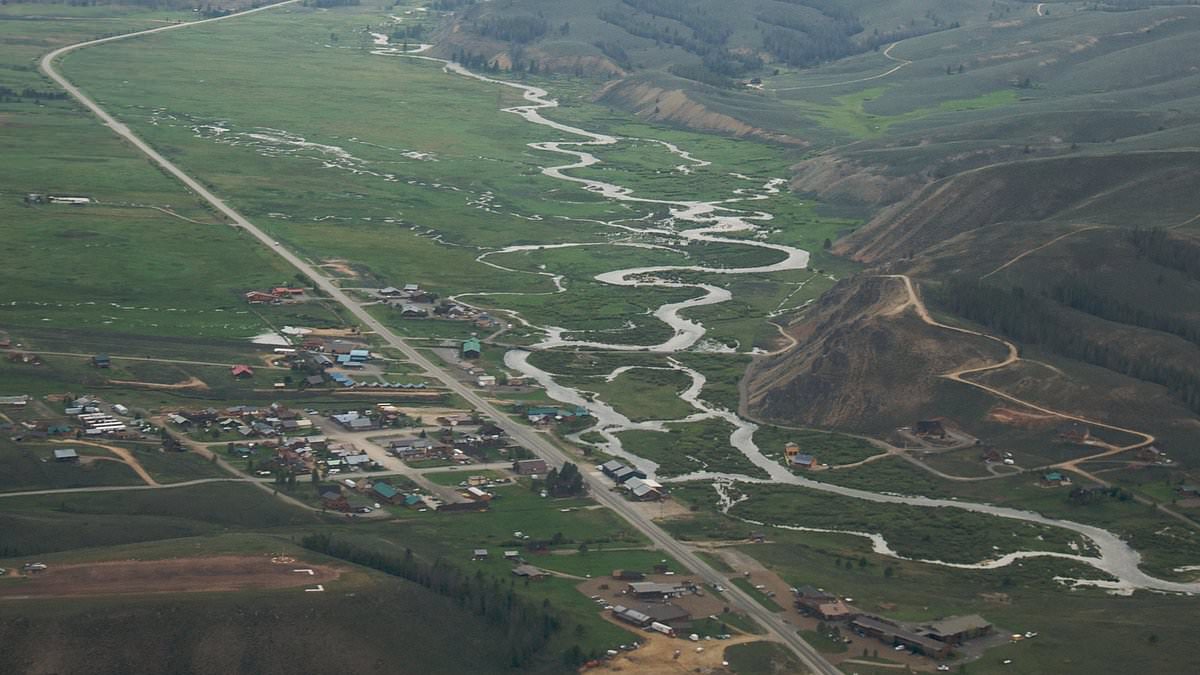A small town in Idaho has been rattled by more than 35 earthquakes in just 24 hours.
The US Geological Survey (USGS) recorded the swarm near Stanley, a town of fewer than 150 people perched along a fault line capable of producing major quakes.
The latest tremor, a 3.5 magnitude, hit at 9:48am PT (12:48pm ET) on Wednesday.
Stanley sits near the Sawtooth Fault, a 40-mile-long fault line running through central Idaho.
While geologically ancient, the Sawtooth Fault was only clearly identified in 2010.
It drew national attention after a magnitude 6.5 earthquake struck in 2020, one of the largest in Idaho’s recent history, which was felt across several states.
Experts have called the Sawtooth Fault a ‘sleeping giant’ as it is dormant for long periods but capable of triggering a devastating earthquake when it awakens.
This week’s constant wave of seismic activity in the same area is ‘unusual’ and concerning to Idaho state geologist Claudio Berti, who said it’s unclear what’s going to happen next.

The US Geological Survey (USGS) detected the seismic activity near Stanley (pictured), which sits on fault line capable of producing a major quake
The earthquakes detected overnight range from 1.9 magnitude to 4.0 magnitude.
While earthquakes above a 2.5 magnitude can be felt, this region of Idaho is sparsely populated. Only dozens of people reported shaking in the last 24 hours.
Seismic swarms can sometimes act as precursors to larger earthquakes along a certain fault line, but there’s no guarantee such an event will take place in Stanley.
However, scientists estimate the fault could produce magnitude 7.0 or greater earthquakes, strong enough to cause serious shaking and damage hundreds of miles away.
‘When we get one single [earthquake] event somewhere in the middle of nowhere, it is hard to make any sense of it,’ Berti told the Idaho Statesman.
He explained that when there’s a constant series of quakes focused in a specific area, their alignment tends to reveal the location and shape of the fault – the crack in the Earth’s crust where rocks move and cause earthquakes.
The vast majority of earthquakes result from the constant movement of tectonic plates, which are massive, solid slabs of rock that make up the planetary surface and shift around on top of Earth’s mantle – the inner layer between the crust and core.
As the tectonic plates slowly move against each other, their edges can get stuck due to friction and stress will build along the edges.

The latest tremor, a 3.5 magnitude, hit at 9:48am PT (12:48pm ET) on Wednesday
When that stress overcomes the friction, the plates slip, causing a release of energy that travels in waves through the Earth’s crust and generates the shaking we feel at the surface.
The Sawtooth Fault is believed to be millions of years old and is part of the larger tectonic process that shaped the Basin and Range Province in the western US.
Experts call the Sawtooth Fault a ‘sleeping giant’ as it is dormant for long periods but capable of triggering a devastating earthquake when it awakens.
Read More
EXCLUSIVE
The 'inevitable' US disasters that keep scientists up at night

The 2020 earthquake was the second largest to hit the states, followed by a 6.9 magnitude in 1983.
Officials found that two months later, Stanley Lake’s beach – a popular fishing and swimming spot – had collapsed due to the powerful tremor.
‘One of the most dramatic effects of the earthquake was liquefaction at Stanley Lake. Ground shaking can weaken loose, water-saturated sediments, causing them to behave almost like a liquid,’ the USGS said.
At Stanley Lake, the sandy area near the inlet stream sank dramatically due to liquefaction.
‘A popular beach at the inlet stream delta completely disappeared, and large cracks and sand boils formed along the shore.’
The event also triggered snow avalanches, debris slides and rock falls.
More than 47,000 people reported feeling shaking from at least six surrounding states. Those included Montana, Washington, Utah, Nevada, Oregon and in parts of southern Canada.
